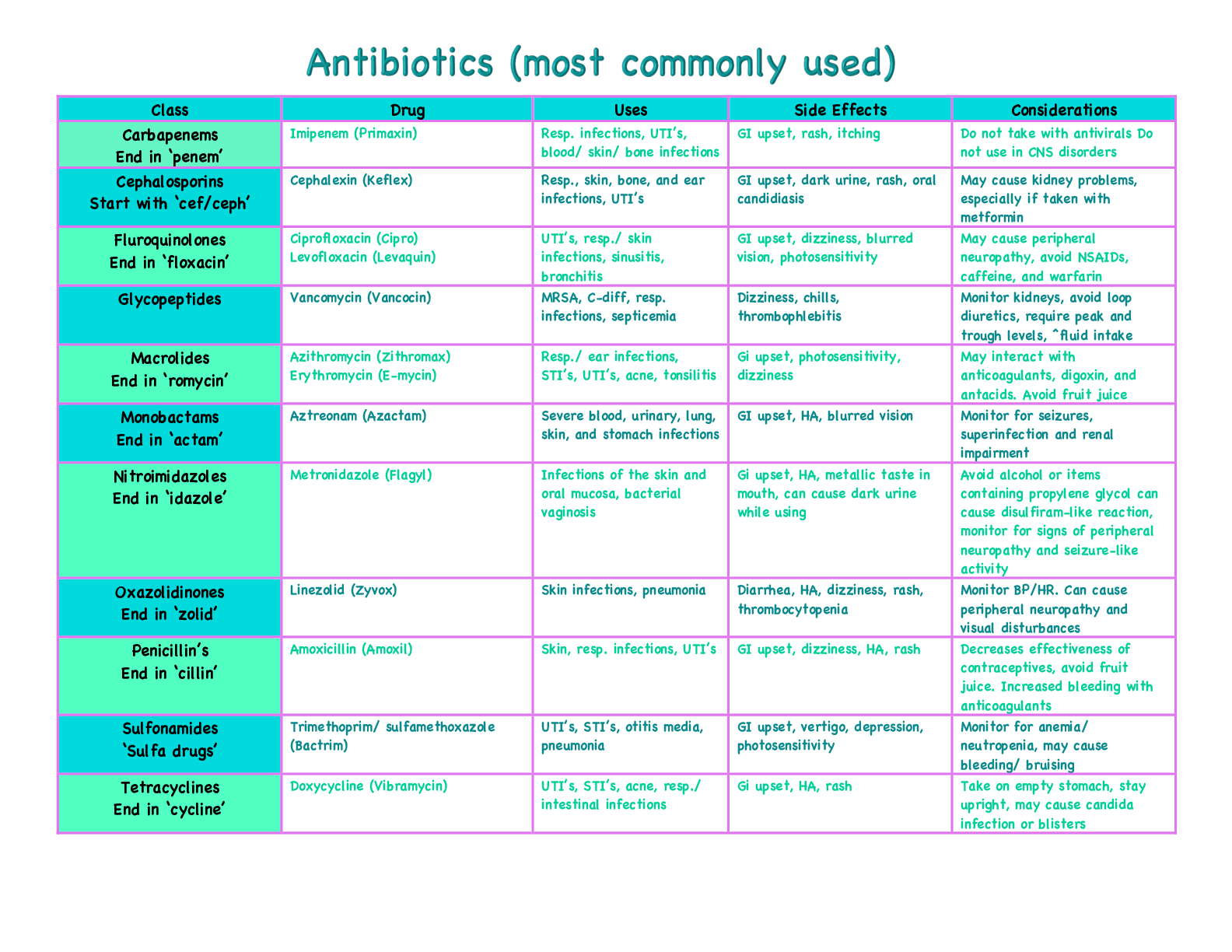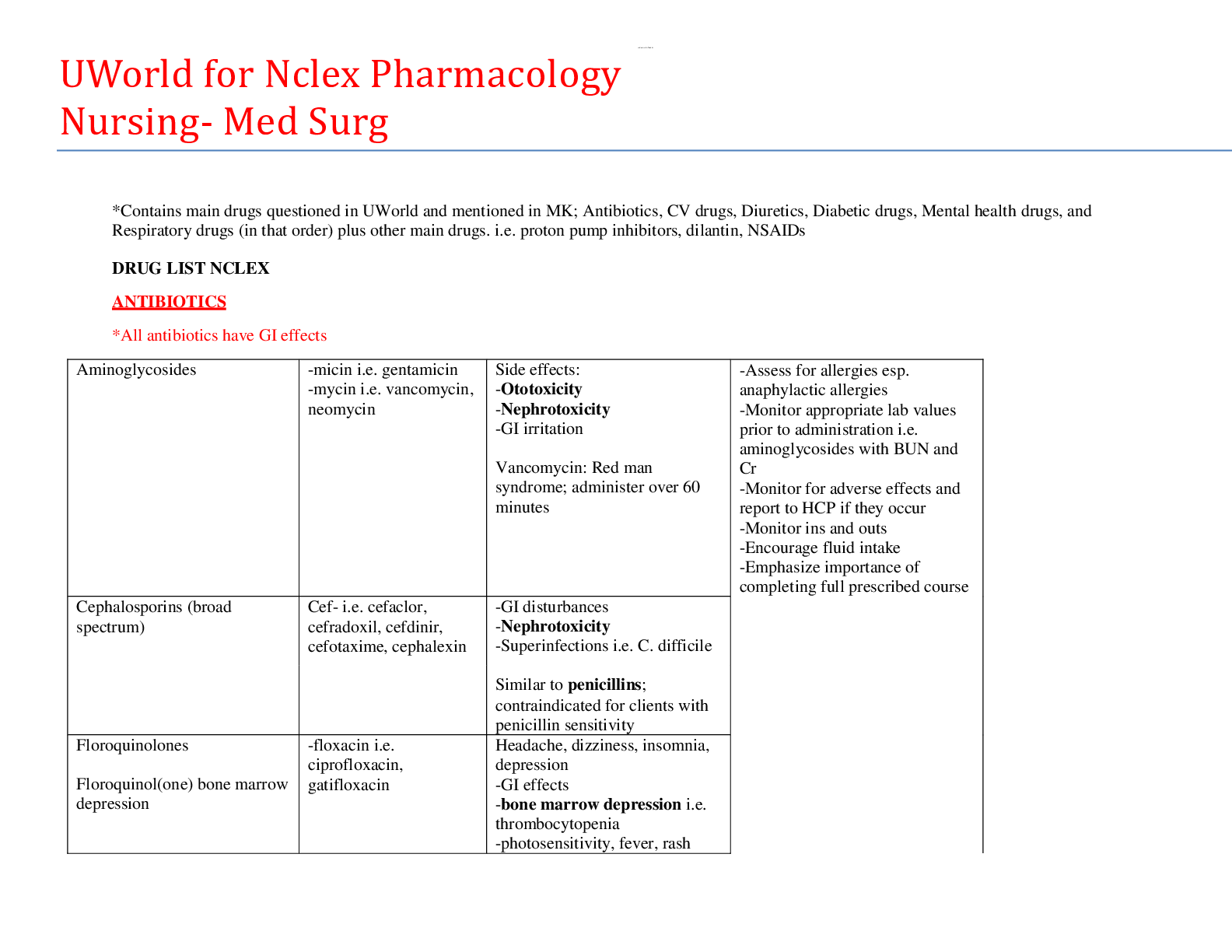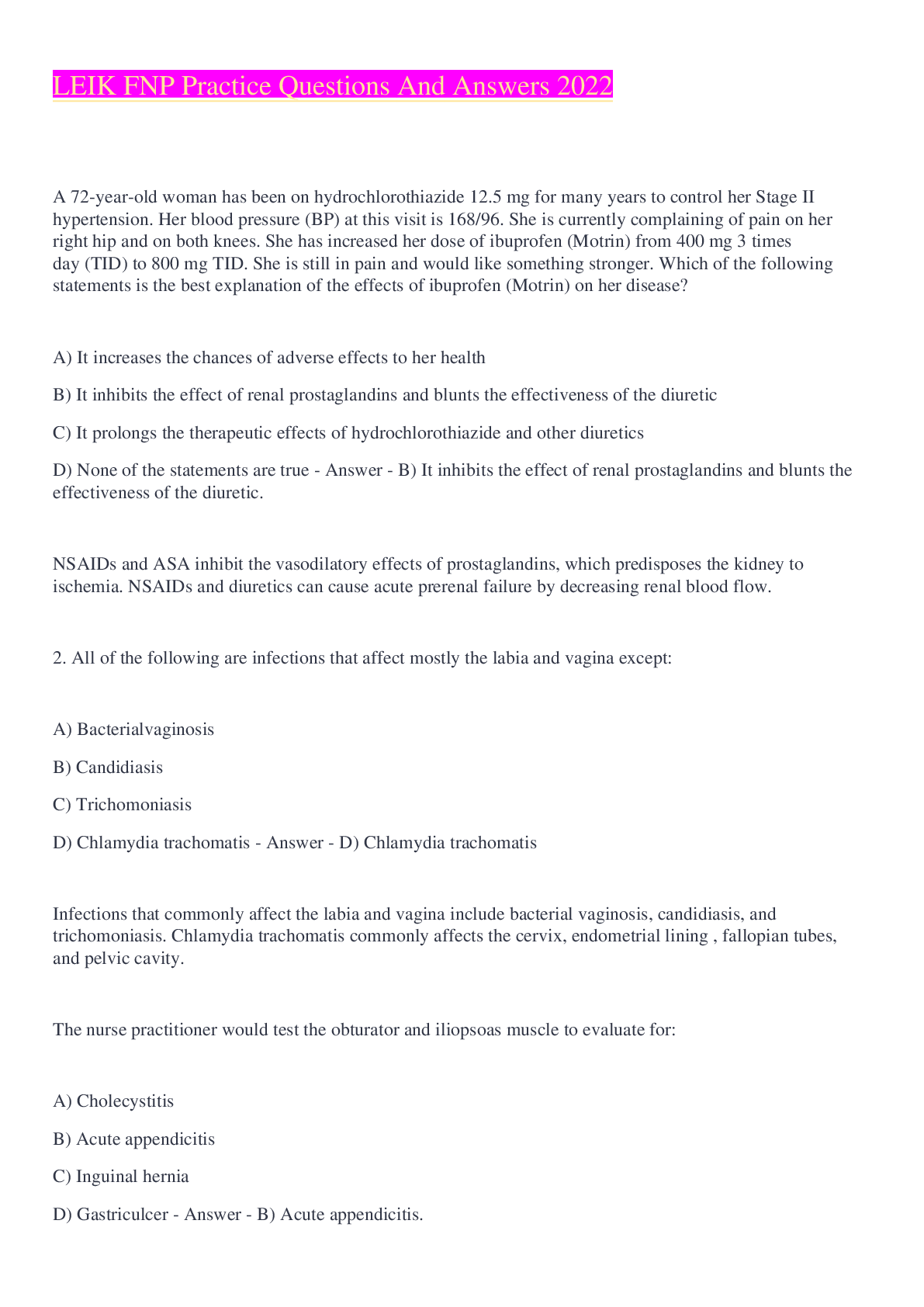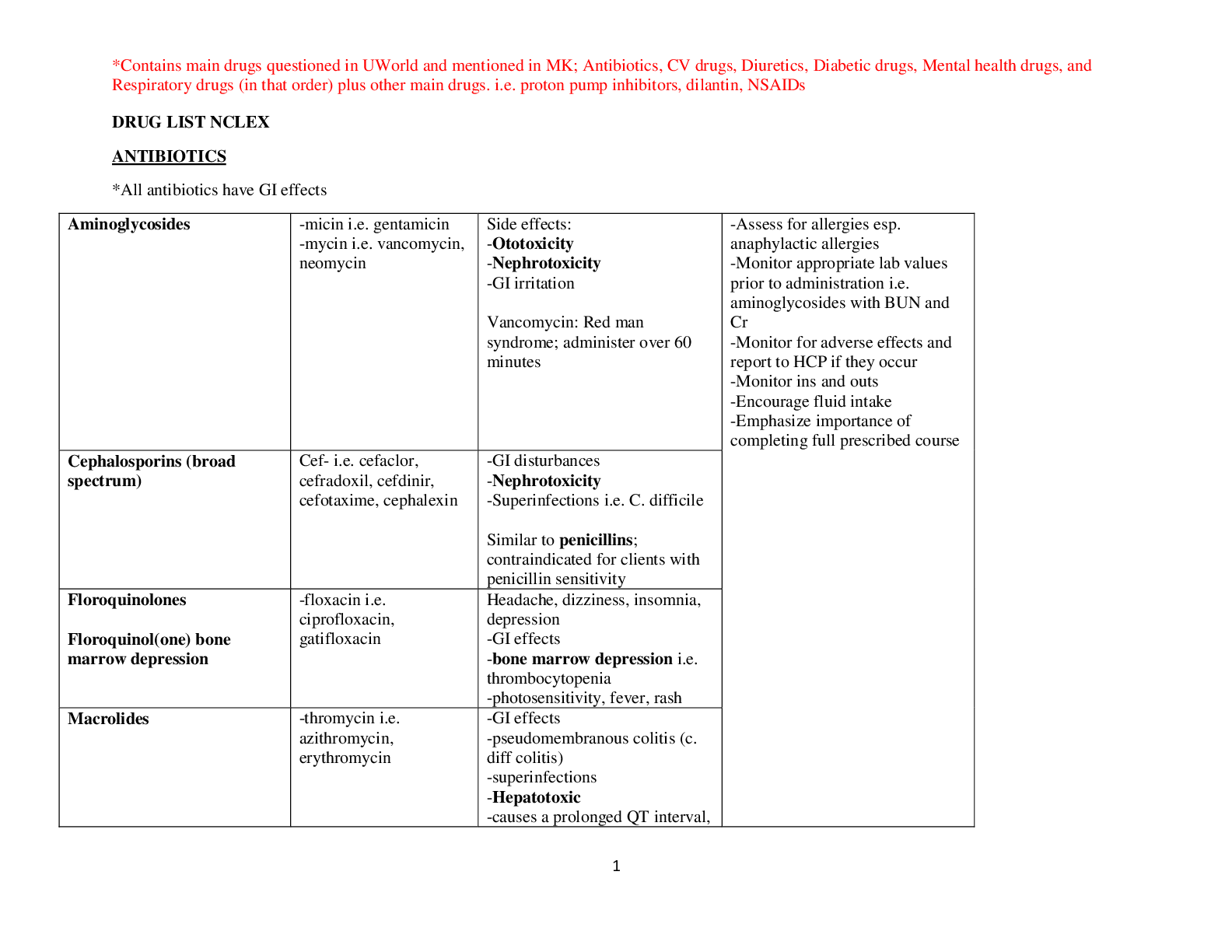Search for
Filter By
Rating
Price in $
Search Results 'Diuretics'
Showing All results
Sort by
*NURSING > QUESTIONS & ANSWERS > NCLEX Practice Pharm 41: Diuretics Questions and Answers Already Passed (All)
Pharmacology > TEST BANK > Test Bank for Pharmacology for the Surgical Technologist 6th Edition by Tiffany Howe & Angela Burton - Complete, Elaborated and Latest Test Bank. All Chapters (1-16) Included and Updated (All)
Pharmacology > TEST BANK > Test Bank for Pharmacology for the Surgical Technologist 6th Edition by Tiffany Howe & Angela Burton - Complete, Elaborated and Latest Test Bank. All Chapters (1-16) Included and updated for 2023 (All)
Pharmacology > CHEAT SHEET > Pharmacology Cheat Sheet: Bundle- Antibiotics, Antidepressants, Psych Meds, Cardiac Meds, Diuretics, Respiratory Meds, Insulin Guide, Analgesics, All the Most Commonly Used (All)
Education > ESSAY > Anti hypertensive/Diuretics for Home therapy (All)
*NURSING > CHEAT SHEET > Pharmacology Cheat Sheet: Bundle- Antibiotics, Antidepressants, Psych Meds, Cardiac Meds, Diuretics, Respiratory Meds, Insulin Guide, Analgesics, All the Most Commonly Used (All)
Pharmacology > NCLEX-PN > UWorld for Nclex Pharmacology Nursing- Med Surg *Contains main drugs questioned in UWorld and mentioned in MK; Antibiotics, CV drugs, Diuretics, (All)
Health Care > QUESTIONS & ANSWERS > A 72-year-old woman has been on hydrochlorothiazide 12.5 mg for many years to control her Stage II hypertension. Her blood pressure (BP) at this visit is 168/96. She is currently complaining of pain on her right hip and on both knees. She has increased her dose of ibuprofen (Motrin) from 400 mg 3 times day (TID) to 800 mg TID. She is still in pain and would like something stronger. Which of the following statements is the best explanation of the effects of ibuprofen (Motrin) on her disease? A) It increases the chances of adverse effects to her health B) It inhibits the effect of renal prostaglandins and blunts the effectiveness of the diuretic C) It prolongs the therapeutic effects of hydrochlorothiazide and other diuretics D) None of the statements are true - Answer - B) It inhibits the effect of renal prostaglandins and blunts the effectiveness of the diuretic. NSAIDs and ASA inhibit the vasodilatory effects of prostaglandins, which predisposes the kidney to ischemia. NSAIDs and diuretics can cause acute prerenal failure by decreasing renal blood flow. 2. All of the following are infections that affect mostly the labia and vagina except: A) Bacterialvaginosis B) Candidiasis C) Trichomoniasis D) Chlamydia trachomatis - Answer - D) Chlamydia trachomatis Infections that commonly affect the labia and vagina include bacterial vaginosis, candidiasis, and trichomoniasis. Chlamydia trachomatis commonly affects the cervix, endometrial lining , fallopian tubes, and pelvic cavity. The nurse practitioner would test the obturator and iliopsoas muscle to evaluate for: A) Cholecystitis B) Acute appendicitis C) Inguinal hernia D) Gastriculcer - Answer - B) Acute appendicitis. Signs and symptoms of an acute abdomen include invol- untary guarding, rebound tenderness, boardlike abdomen, and a positive obtu- rator and psoas sign. A positive obturator sign occurs when pain is elicted by internal rotation of the right hip from 90 degrees hip/knee flexion. The psoas sign is positive when pain occurs with passive extension of the thigh while the patient is lying on his/her side with knees extended, or when pain occurs with active flexion of his/her thigh at the hip. Treatment for mild preeclam (All)
*NURSING > QUESTIONS & ANSWERS > Diuretics pharmacology NCLEX questions and answers already passed (All)
*NURSING > NCLEX-RN > DRUG LIST NCLEX: *Contains main drugs questioned in UWorld and mentioned in MK; Antibiotics, CV drugs, Diuretics, Diabetic drugs, Mental health drugs, and Respiratory drugs (in that order) plus other main drugs. i.e. proton pump inhibitors, dilantin, NSAIDs (All)










